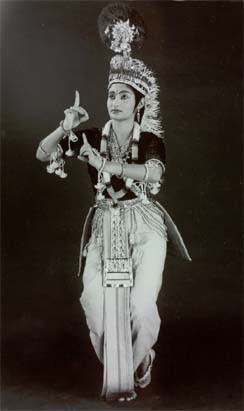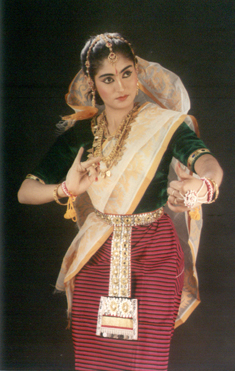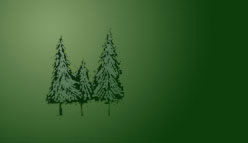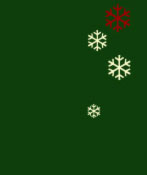
|
| Nanichuri by Poushali |
Tandav & Lasya
Manipuri has two distinct styles, Tandava, or masculine which is forceful and vigorous and Lasya or feminine, which is graceful
and lyrical. The difference between the two is more pronounced than in other dance styles - so much so that dancers have to
wear different costumes to perform them. Within Tandava, there is Gunthanam which is the direct counterpart of Lasya and performed
in the famous Rasleelas. Chalanam is performed in Sankirtan in Pung Cholom and Kartal Cholom (dances with drums and cymbals)
- it is more vigorous, involving acrobatic movements. Prasaranam is the Martial Arts of Manipur called Thant-ta - it's an
extremely vigourous and stylised form of Tandava. In Lasya, a lot of emphasis is laid on the undulating torso movements -
this is easy to look at but extremely difficult to master!

|
| Poushali performing lasya |
Some other unique features
The flowing river - All movements in Manipuri Dance are like the waves of the sea, one merging into
the other, without any sharp breaks. The hand movements are rounded, maintaining a 45 degree angle.
The Natural Aspect: All the movements are stylised and subtle, while representing their natural counterpart
- no excess, no exaggeration. The same goes for abhinaya too - it's completely natural, with no overt facial expressions or
eye movements like other dance styles. Control is the essence of Manipuri dance, whether it is pure dance or abhinaya. Even
after a vigorous jump, the dancer lands softly on the ground, without making any sound.
The Devotional Element:
Bhakti is the guiding force of Manipuri dance and it is expressed through the dancer's grace and humility, even on stage.
The movements and expressions should not have any lightness or cheapness about them. They should be subtle, controlled and
stylised, maintaining poise and elegance.
  
|
 |
 
Costumes - A Visual Extravaganza
The costumes of the Manipuri Rasleela are some of the
most resplendent among Indian dances. The peacock feather mukut or crown adorning Krishna's head or the glittering round skirts
worn by Radha and the Gopies create a spectacular sight - almost like paradise on earth. It is believed that Maharaja Bhagyachandra,
the propounder of Vaishnavism in Manipur and the founder of Rasleela and Sankirtan, saw the costumes in his dream and got
them made accordingly.
The costumes for Lai Haraoba are however, different. They are inspired by the
motifs and designs of the primitive Manipuri culture. The women's attire is composed of phaneks (Manipuri wraparound skirts),
velvet blouses and decorative headgear called Kajinglei. The men wear a dhoti called khamenchetpa and very elaborate headgear.
For modern stage presentations, various forms of these costumes are being used.
|
 |
|
|
|




